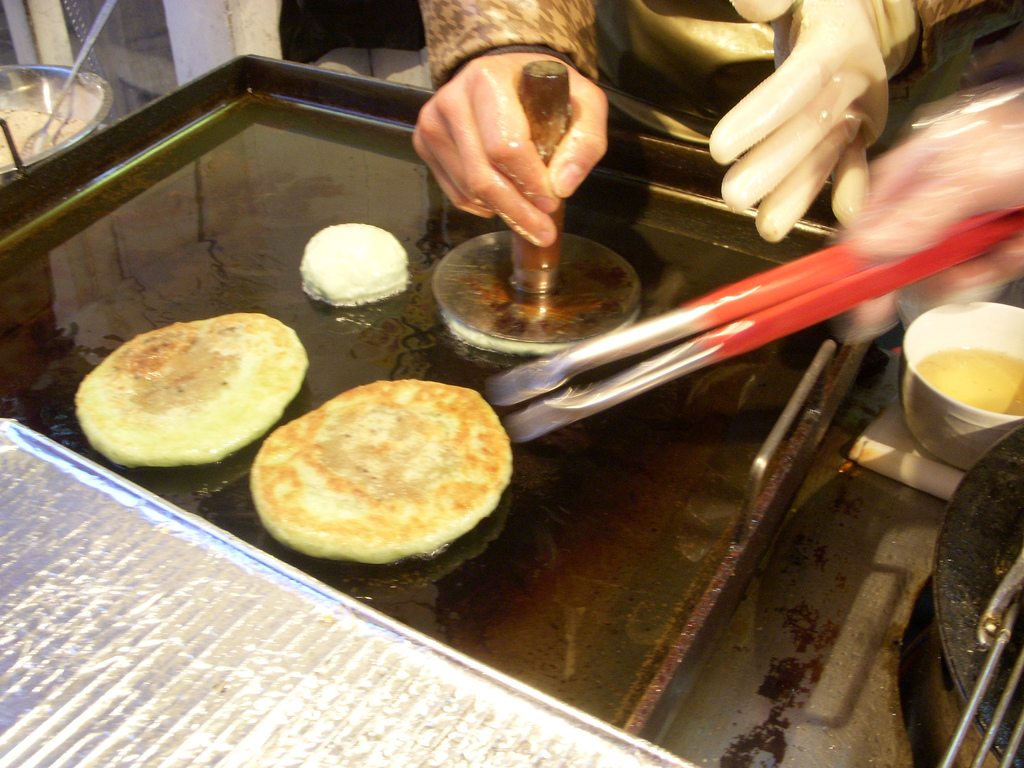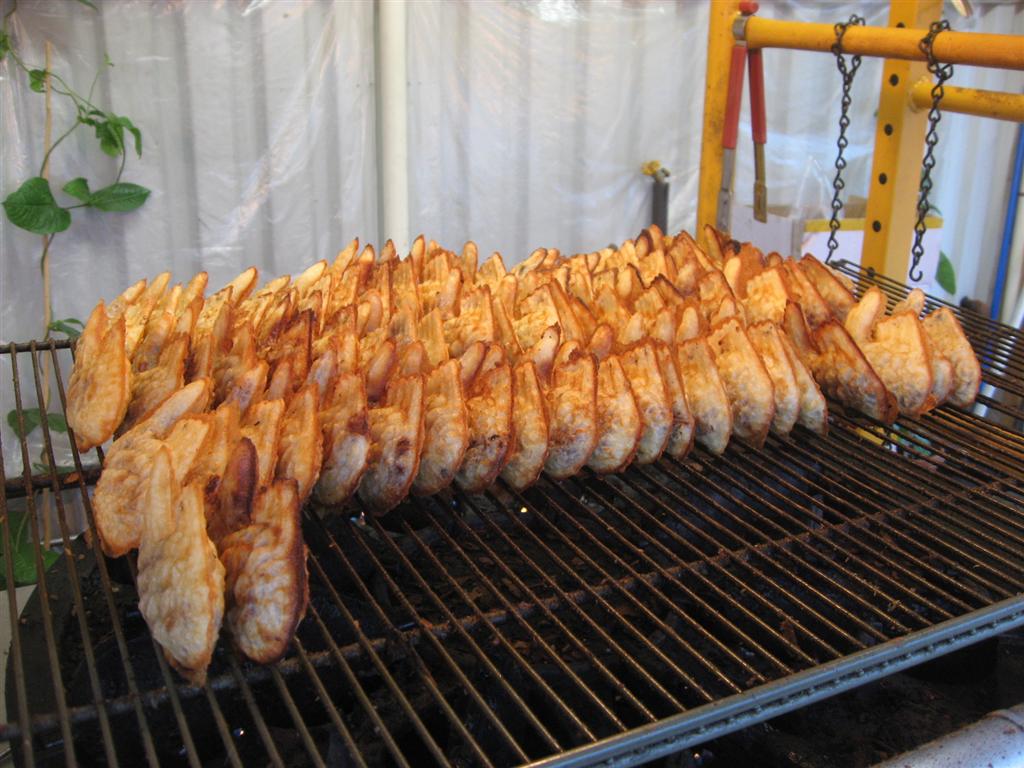|
Kkultarae
(), also known as Korean court cake, is a Korean dessert and a variation of Dragon's beard candy which originated in China. A hard dough of honey-maltose mixture is kneaded, twisted, stretched and pulled into skeins of silky threads, in which assorted candied nuts, chocolate, or other fillings are wrapped. The name was trademarked in November 7th of 2000 with intent to sell dessert similar to Dragon's beard candy in Korea. See also * List of Korean desserts This is a list of Korean desserts. Korean cuisine known today has evolved through centuries of social and political change. Originating from ancient agricultural and nomadic traditions in southern Manchuria and the Korean peninsula, Korean cuisi ... * References Korean desserts Street food in South Korea {{Korea-dessert-stub ... [...More Info...] [...Related Items...] OR: [Wikipedia] [Google] [Baidu] |
Dessert
Dessert is a course (food), course that concludes a meal. The course consists of sweet foods, such as confections, and possibly a beverage such as dessert wine and liqueur. In some parts of the world, such as much of Greece and West Africa, and most parts of China, there is no tradition of a dessert course to conclude a meal. The term ''dessert'' can apply to many confectionery, confections, such as biscuits, cakes, cookies, custards, gelatin dessert, gelatins, ice creams, pastry, pastries, pies, puddings, macaroons, tong sui, sweet soups, tarts, and fruit salad. Fruit is also commonly found in dessert courses because of its naturally occurring sweetness. Some cultures sweeten foods that are more commonly umami, savory to create desserts. Etymology The word "dessert" originated from the French word ''desservir,'' meaning "to clear the table". Its first known use in English was in 1600, in a health education manual entitled ''Naturall and artificial Directions for Health'', w ... [...More Info...] [...Related Items...] OR: [Wikipedia] [Google] [Baidu] |
Dragon's Beard Candy
Dragon's beard candy ( zh, t=龍鬚糖, s=龙须糖, p=lóng xū táng, first=t or Chinese cotton candy is a handmade traditional art of China. It is a traditional Chinese confectionary similar to floss halva or Western cotton candy, which can be found in many Chinese communities. Dragon's beard candy was initially created in China, but soon spread in popularity in other parts of East Asia and became a regional delicacy in other parts of East Asia such as South Korea, as well as (and more recently) Canada, Turkey, Singapore, and the United States. It has a low sugar content (19%) and low saturated fat content (2%). By comparison, cotton candy is fat free with a very high sugar content (94%). Dragon's beard candy has a very short shelf life. It is highly sensitive to moisture and tends to melt when exposed to higher temperatures, notably during warm weather. History According to legend, Dragon's Beard Candy was invented during the Chinese Han Dynasty Ng Yan Yan. URL accessed on ... [...More Info...] [...Related Items...] OR: [Wikipedia] [Google] [Baidu] |
Korean Dessert
This is a list of Korean desserts. Korean cuisine known today has evolved through centuries of social and political change. Originating from ancient agricultural and nomadic traditions in southern Manchuria and the Korean peninsula, Korean cuisine has evolved through a complex interaction of the natural environment and different cultural trends. Korean desserts Hangwa Hangwa is a general term for Korean traditional confectionery. Common ingredients in ''hangwa'' are grain flour, honey, ''yeot'', sugar, fruit or edible root. * Dasik * Gangjeong * Gwapyeon * Jeonggwa * Maejakgwa * Mandugwa * Suksilgwa * Yakgwa * Yeot * Yeot-gangjeong * Yumilgwa File:Korean hangwa-Dasik-02.jpg, Dasik, a variety of ''hangwa'', is made from ''nongmal'' (which is starch made from potatoes, sweet potatoes or soaked mung beans), pine pollen ''singamchae'', black sesame, honey, flour from rice or other grains, nuts and/or herbs. File:Korean.desserts-Yugwa-01.jpg, Yumilgwa made by deep fry ... [...More Info...] [...Related Items...] OR: [Wikipedia] [Google] [Baidu] |
List Of Korean Desserts
This is a list of Korean desserts. Korean cuisine known today has evolved through centuries of social and political change. Originating from ancient agricultural and nomadic traditions in southern Manchuria and the Korean peninsula, Korean cuisine has evolved through a complex interaction of the natural environment and different cultural trends. Korean desserts Hangwa Hangwa is a general term for Korean traditional confectionery. Common ingredients in ''hangwa'' are grain flour, honey, ''yeot'', sugar, fruit or edible root. * Dasik * Gangjeong * Gwapyeon * Jeonggwa * Maejakgwa * Mandugwa * Suksilgwa * Yakgwa * Yeot * Yeot-gangjeong * Yumilgwa File:Korean hangwa-Dasik-02.jpg, Dasik, a variety of ''hangwa'', is made from ''nongmal'' (which is starch made from potatoes, sweet potatoes or soaked mung beans), pine pollen ''singamchae'', black sesame, honey, flour from rice or other grains, nuts and/or herbs. File:Korean.desserts-Yugwa-01.jpg, Yumilgwa made by deep fry ... [...More Info...] [...Related Items...] OR: [Wikipedia] [Google] [Baidu] |
Korea
Korea ( ko, 한국, or , ) is a peninsular region in East Asia. Since 1945, it has been divided at or near the 38th parallel, with North Korea (Democratic People's Republic of Korea) comprising its northern half and South Korea (Republic of Korea) comprising its southern half. Korea consists of the Korean Peninsula, Jeju Island, and several minor islands near the peninsula. The peninsula is bordered by China to the northwest and Russia to the northeast. It is separated from Japan to the east by the Korea Strait and the Sea of Japan (East Sea). During the first half of the 1st millennium, Korea was divided between three states, Goguryeo, Baekje, and Silla, together known as the Three Kingdoms of Korea. In the second half of the 1st millennium, Silla defeated and conquered Baekje and Goguryeo, leading to the "Unified Silla" period. Meanwhile, Balhae formed in the north, superseding former Goguryeo. Unified Silla eventually collapsed into three separate states due to ... [...More Info...] [...Related Items...] OR: [Wikipedia] [Google] [Baidu] |
Honey
Honey is a sweet and viscous substance made by several bees, the best-known of which are honey bees. Honey is made and stored to nourish bee colonies. Bees produce honey by gathering and then refining the sugary secretions of plants (primarily floral nectar) or the secretions of other insects, like the honeydew of aphids. This refinement takes place both within individual bees, through regurgitation and enzymatic activity, as well as during storage in the hive, through water evaporation that concentrates the honey's sugars until it is thick and viscous. Honey bees stockpile honey in the hive. Within the hive is a structure made from wax called honeycomb. The honeycomb is made up of hundreds or thousands of hexagonal cells, into which the bees regurgitate honey for storage. Other honey-producing species of bee store the substance in different structures, such as the pots made of wax and resin used by the stingless bee. Honey for human consumption is collected from wild ... [...More Info...] [...Related Items...] OR: [Wikipedia] [Google] [Baidu] |
China
China, officially the People's Republic of China (PRC), is a country in East Asia. It is the world's most populous country, with a population exceeding 1.4 billion, slightly ahead of India. China spans the equivalent of five time zones and borders fourteen countries by land, the most of any country in the world, tied with Russia. Covering an area of approximately , it is the world's third largest country by total land area. The country consists of 22 provinces, five autonomous regions, four municipalities, and two Special Administrative Regions (Hong Kong and Macau). The national capital is Beijing, and the most populous city and financial center is Shanghai. Modern Chinese trace their origins to a cradle of civilization in the fertile basin of the Yellow River in the North China Plain. The semi-legendary Xia dynasty in the 21st century BCE and the well-attested Shang and Zhou dynasties developed a bureaucratic political system to serve hereditary monarchies, or dyna ... [...More Info...] [...Related Items...] OR: [Wikipedia] [Google] [Baidu] |
NDTV
New Delhi Television Ltd is an Indian news media company focusing on broadcast and digital news publication. The company is considered to be a legacy brand that pioneered independent news broadcasting in India, and is credited for launching the first 24x7 news channel and the first lifestyle channel in the country. It owns and operates the broadcast news channels of NDTV India and NDTV 24x7. The two channels of the company have received 32 Ramnath Goenka Excellence in Journalism Awards. NDTV was founded in 1984, by economist Prannoy Roy and journalist Radhika Roy, a husband and wife duo from the city of Kolkata. It began as a production house for news segments, contracted by the public broadcaster Doordarshan and international satellite channels when television broadcasting was a state monopoly, and transitioned into the first independent news network in India. The company launched the first 24x7 news channel in partnership with Star India in 1998. Between 1998 and 2003, ... [...More Info...] [...Related Items...] OR: [Wikipedia] [Google] [Baidu] |
Maltose
} Maltose ( or ), also known as maltobiose or malt sugar, is a disaccharide formed from two units of glucose joined with an α(1→4) bond. In the isomer isomaltose, the two glucose molecules are joined with an α(1→6) bond. Maltose is the two-unit member of the amylose homologous series, the key structural motif of starch. When beta-amylase breaks down starch, it removes two glucose units at a time, producing maltose. An example of this reaction is found in germinating seeds, which is why it was named after malt. Unlike sucrose, it is a reducing sugar. History Maltose was discovered by Augustin-Pierre Dubrunfaut, although this discovery was not widely accepted until it was confirmed in 1872 by Irish chemist and brewer Cornelius O'Sullivan. Its name comes from malt, combined with the suffix ' -ose' which is used in names of sugars. Structure and nomenclature Carbohydrates are generally divided into monosaccharides, oligosaccharides, and polysaccharides depending on the nu ... [...More Info...] [...Related Items...] OR: [Wikipedia] [Google] [Baidu] |
The Indian Express
''The Indian Express'' is an English-language Indian daily newspaper founded in 1932. It is published in Mumbai by the Indian Express Group. In 1999, eight years after the group's founder Ramnath Goenka's death in 1991, the group was split between the family members. The southern editions took the name ''The New Indian Express'', while the northern editions, based in Mumbai, retained the original ''Indian Express'' name with ''"The"'' prefixed to the title. History In 1932, the ''Indian Express'' was started by an Ayurvedic doctor, P. Varadarajulu Naidu, at Chennai, being published by his "Tamil Nadu" press. Soon under financial difficulties, he sold the newspaper to Swaminathan Sadanand, the founder of ''The Free Press Journal'', a national news agency. In 1933, the ''Indian Express'' opened its second office in Madurai, launching the Tamil edition, '' Dinamani''. Sadanand introduced several innovations and reduced the price of the newspaper. Faced with financial difficultie ... [...More Info...] [...Related Items...] OR: [Wikipedia] [Google] [Baidu] |
Korean Desserts
Korean may refer to: People and culture * Koreans, ethnic group originating in the Korean Peninsula * Korean cuisine * Korean culture * Korean language **Korean alphabet, known as Hangul or Chosŏn'gŭl **Korean dialects and the Jeju language **See also: North–South differences in the Korean language Places * Korean Peninsula, a peninsula in East Asia * Korea, a region of East Asia * North Korea, the Democratic People's Republic of Korea * South Korea, the Republic of Korea Other uses *Korean Air, flag carrier and the largest airline of South Korea See also *Korean War, 1950–1953 war between North Korea and South Korea *Names of Korea, various country names used in international contexts *History of Korea The Lower Paleolithic era in the Korean Peninsula and Manchuria began roughly half a million years ago. Christopher J. Norton, "The Current State of Korean Paleoanthropology", (2000), ''Journal of Human Evolution'', 38: 803–825. The earlies ..., the history of Kor ... [...More Info...] [...Related Items...] OR: [Wikipedia] [Google] [Baidu] |




